When's a van a van and when's it a car?
- Published
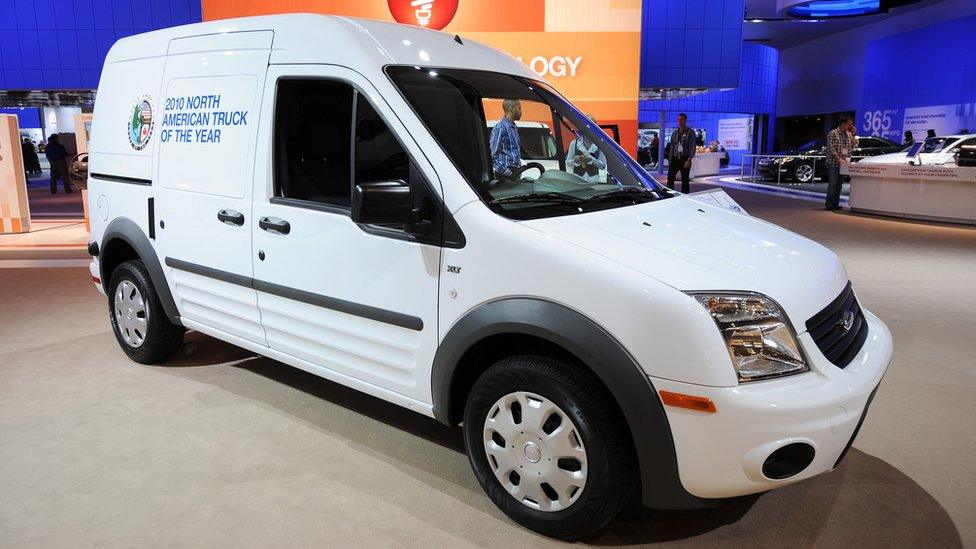
Ford exports its Transit Connect to the US with rear seats and windows, only to remove them once the vehicle has gone through customs
Have you heard the one about the chicken and the van?
As a way to get around a 55-year-old 25% tariff on the import of vans or light trucks into the US, carmaker Ford takes a novel approach.
Ford may be an American company, but it makes its smallest van, the Transit Connect, in Spain, exporting tens of thousands of them to the US every year.
To dodge the tariff Ford fits rear seats and windows to the vans going to the US, only to then remove both once they have gone through customs. The makeover from nominal car (just 2.5% import tariff) to van is said to take two-and-a-half hours per vehicle.
The practice has saved Ford $250m (£190m) since the van was debuted in 2002, according to an estimate by US Customs and Border Protection.
The tariff on vans is colloquially known as the "chicken tax", external. While this may seem bizarre, it takes its informal name from the fact it was introduced in 1963 in retaliation for the then-European Economic Community (the precursor to today's European Union) bringing in a tax on US poultry imports.
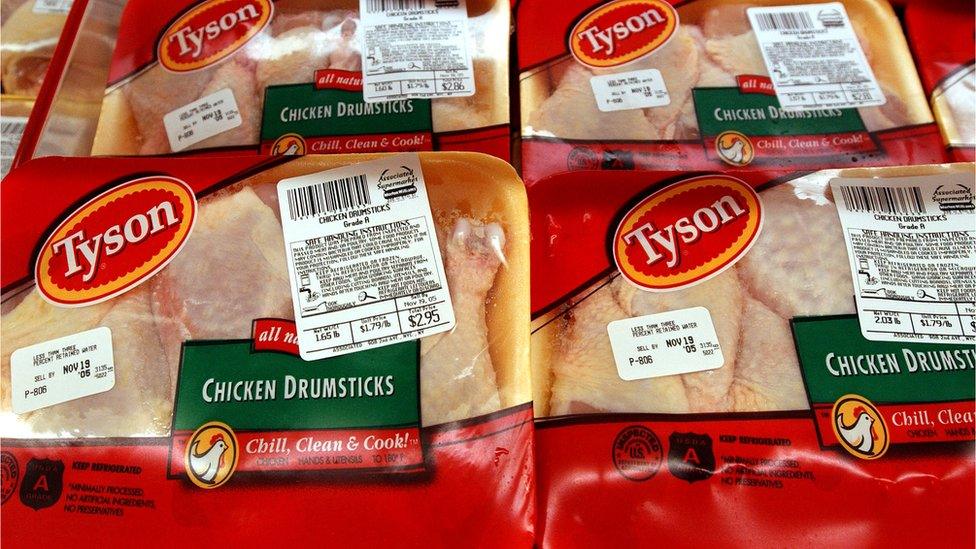
The "chicken tax" on the import of vans into the US was introduced in retaliation to European tariffs on American poultry
In introducing the levy, the government of Lyndon Johnson was aiming specifically at German carmaker Volkswagen, which had started to break into the American van market.
Ford's way of getting round the import tax is a good example of what is known as "tariff engineering" - adapting the item you are importing so that you don't have to pay any levy. And the company is far from alone in doing it.
In fact, with the US last month imposing tariffs on a further $200bn worth of Chinese products, and China retaliating with levies on $60bn of US goods, we may be about to enter a new era of tariff engineering.
Yet with Ford now continuing a legal battle with US Customs over the issue of it transforming its Transit Connects, authorities do regularly fight back.
Deborah Stern, a trade lawyer at Sandler, Travis & Rosenberg in Miami, says that "tariff classification is as much of an art as it is a science".
But first, a history lesson. Tariff engineering in the US began more than 100 years ago, in a battle over sugar.
In the late 19th Century, US sugar tariffs were based on colour. The lighter the shade, the more refined the product, hence the higher levy.

The US used to tax sugar according to its colour
When New York duty collectors discovered that one company had dyed its sugar to secure a lower levy, they weren't happy.
The case, Merrit v Welsh, external, went all the way to the US Supreme Court, which ruled in the importer's favour.
The court noted that Congress had applied a colour test to classify the product, not a chemical test.
The product was sold as seen, and the court ruled that an importer could change its product to meet the lower rate of duty as long as there was no "resort to disguise or artifice".
In other words, if the product - at face value - is as described when inspected, then the tariff engineering in question is legal.
Today there are thousands of examples of tariff engineering.
Take a closer look at Converse trainers imported into the US and you might find they have a fuzzy, fabric material covering part of the sole of each shoe.
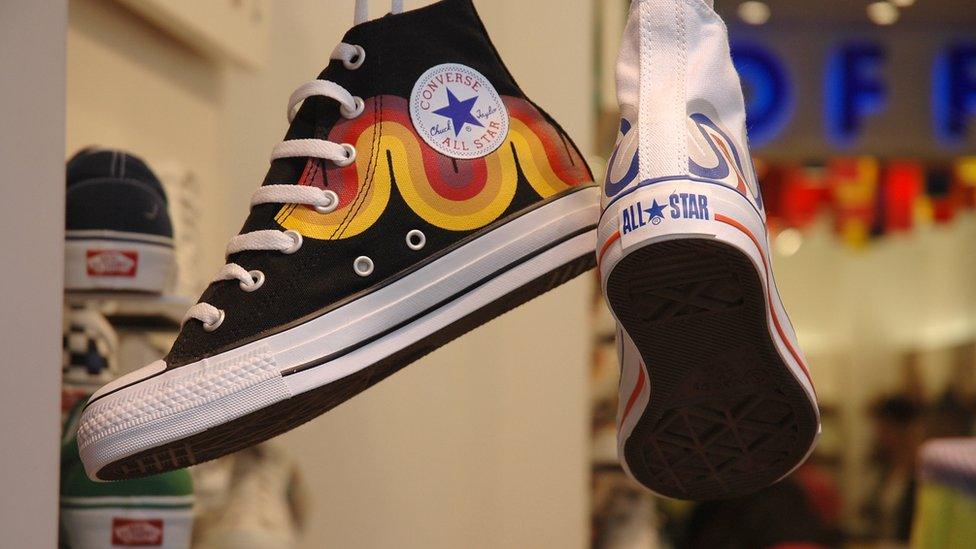
The next time you buy a pair of Converse see if there are strips of fabric stuck on to the soles
This is because mixing textiles into the soles of athletic shoes qualifies them for the lower duties charged on bedroom slippers in the US. Nike-owned Converse declined to comment.
Other examples of tariff engineering are even more blatant. When anti-dumping tariffs on candles from China were introduced in the 1980s, importers started bringing in wickless wax cylinders with holes drilled into the middle instead, for wicks to be added at a later date.
By importing them as "wax, moulded or carved articles" instead of "candles", they could legally avoid a 108% anti-dumping tariff.

Global Trade

While the US National Candle Association complained, US Customs said that when inspected at the border the products did not "possess the essential character of a candle".
They were not shipped with a wick, nor did they have the "ability to provide illumination", therefore US Customs could not assume the wax was an unassembled candle.
But modifications aren't always successful.
For example, one company reprimanded in the 1990s had been importing what it claimed were South African feather dusters.
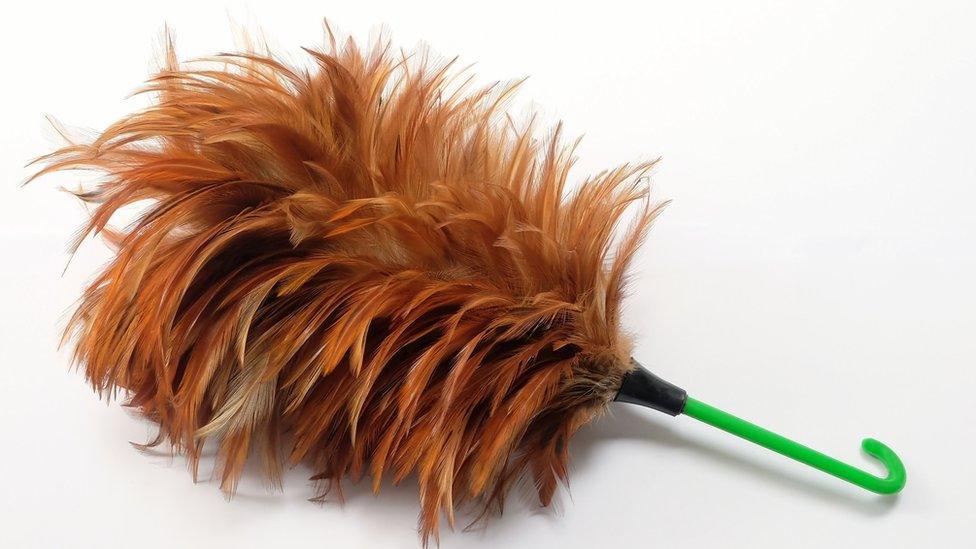
Is that a feather duster or part of a future feather boa?
While they looked like feather dusters, an investigation found the products were later manufactured into feather boas and other items of clothing.
US Customs noted the "flimsy construction" of the feathers, which were stuck "one on top of the other", contrary to the "normal feather duster configuration". This was seen as an example of "disguise or artifice".
Back at Ford, the company tells the BBC that it is open about how it transforms its Transit Connects from passenger vehicles to cargo vans.
But US Customs claims the company is deliberately disguising the true purpose of the vehicles, citing that the rear seat frames are unpainted, the seats don't have headrests and that the covers are made of cheap fabric.
As a result, in 2013, US Customs forced Ford to start paying a 25% tariff on all Transit Connect imports, instead of the previous 2.5%.
Ford immediately challenged this decision at the US Court of International Trade, which ruled in its favour.
US Customs is currently appealing against that decision. In a recent regulatory filing, Ford said: "If we prevail on appeal, we will receive a refund of the contested amounts paid, plus interest."
Lawrence Friedman, a partner at Barnes, Richardson & Colburn in Chicago, says that new tariffs on Chinese imports could spark a fresh wave of tariff engineering.
He uses the example of a football or soccer goal frame. "It's essentially aluminium tubes held together by a net and some fixings."
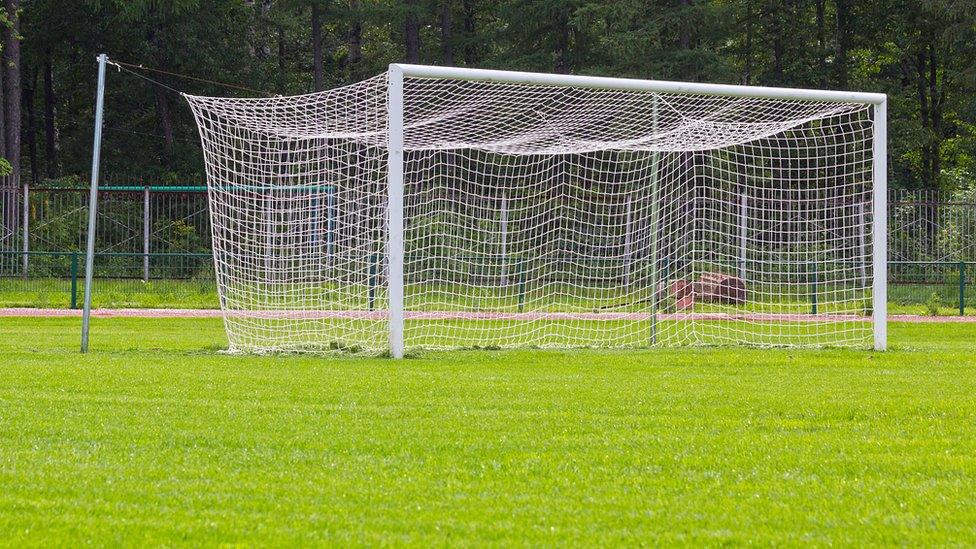
Do you see goalposts or a lovely bit of Chinese aluminium?
"If I'm an importer of aluminium tubes, those tubes are now subject to duties.
"But if I put them in a box with a soccer net and some cheap connecters, instead of bringing them in as aluminium, I can bring them in as sporting goods, which are currently not subject to extra tariffs."
However, Deborah Stern cautions that some items are very difficult indeed to tariff engineer.
"Hats are on the latest US tariff list, and you can't fashion a hat not to be a hat," she says.
"Many chemicals are listed on the tariff list too, and if you need a raw material you can't mess with a chemical too much.
"So while tariff engineering will work with some products in some industries, it's definitely not for every product in every industry."